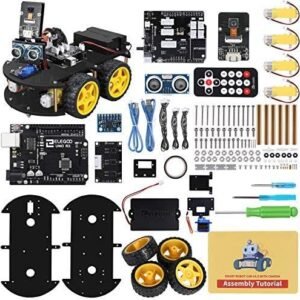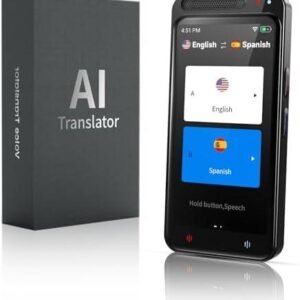In the rapidly evolving landscape of education, traditional classrooms are beginning to witness a profound transformation driven by the integration of artificial intelligence (AI). Far from the futuristic, robot-assisted learning environments often depicted in popular media, AI is quietly and effectively reshaping the way educators teach and students learn. From personalized learning experiences tailored to individual student needs to sophisticated data analytics that help educators identify learning gaps, AI is proving to be a powerful ally in the pursuit of educational excellence. In this article, we will explore the various ways AI is being implemented in traditional classrooms, the benefits it brings to educators and students alike, and the challenges that accompany this technological shift. Join us as we delve into the fascinating intersection of AI and education, and discover how this dynamic duo is poised to redefine the future of learning.
Table of Contents
- Harnessing AI to Personalize Learning Experiences
- Integrating Intelligent Tutoring Systems in Everyday Lessons
- Enhancing Teacher Capacity through AI-Driven Tools
- Promoting Equity in Education with AI Solutions
- The Conclusion
Harnessing AI to Personalize Learning Experiences
Artificial Intelligence is revolutionizing the way educators personalize learning, tailoring experiences to meet each student’s unique needs and learning styles. At its core, AI leverages vast amounts of data to analyze individual performance, providing insights that enable educators to adapt their teaching methods and curricular materials. With AI-driven tools, students can engage in self-paced learning, where they can master difficult concepts before moving on, allowing for more flexibility and greater mastery of subjects.
These personalized experiences can be further enhanced through:
- Adaptive Learning Platforms: Systems that adjust content difficulty in real-time based on student responses.
- AI Tutors: Virtual assistants that provide additional support outside traditional classroom environments.
- Data Analytics: Tools that highlight students’ strengths and weaknesses, informing intervention strategies.
- Gamification: Incorporating game mechanics to increase engagement and motivation.
| AI Tool | Purpose | Impact on Learning |
|---|---|---|
| Smart Content | Customized learning materials | Increases relevance and engagement |
| Predictive Analytics | Identifying at-risk students | Enhances intervention and support |
| Natural Language Processing | Real-time feedback on writing | Improves communication skills |
Integrating Intelligent Tutoring Systems in Everyday Lessons
Intelligent Tutoring Systems (ITS) have revolutionized the way educators approach personalized learning within traditional classrooms. By leveraging AI technology, these systems adapt to individual student needs, providing tailored feedback that enhances understanding and retention. Teachers can seamlessly integrate ITS into their daily lessons through various methods, including:
- Real-time Assessments: Utilizing ITS to monitor student progress and identify areas requiring additional support.
- Customized Learning Paths: Allowing students to choose their own educational trajectories, fostering engagement and autonomy.
- Interactive In-Class Activities: Incorporating ITS to facilitate collaborative projects that promote peer learning and critical thinking.
One of the most compelling aspects of employing intelligent tutoring systems is their ability to provide instant feedback, making lessons more dynamic and focused. For instance, below is a simple comparison of traditional teaching methods versus those enhanced by ITS:
| Traditional Methods | Intelligent Tutoring Systems |
|---|---|
| Generic feedback | Personalized recommendations |
| One-size-fits-all instruction | Adaptable learning experiences |
| Limited student engagement | Interactive and motivating environments |
As classrooms evolve, the integration of Intelligent Tutoring Systems not only enriches the learning experience but also empowers educators to better cater to the diverse needs of their students. By embracing this innovative approach, teachers can create a more inclusive and effective educational environment.
Enhancing Teacher Capacity through AI-Driven Tools
Artificial Intelligence is revolutionizing the educational landscape by enhancing teacher capacity through innovative tools. These AI-driven solutions act as supportive assistants, empowering educators to personalize learning experiences and manage their classrooms more efficiently. With AI’s ability to analyze vast amounts of data, teachers can now gain insights into student performance and engagement, allowing for targeted interventions. Some key features of these tools include:
- Automated grading: Reduces time spent on assessments, enabling teachers to focus on instructional strategies.
- Predictive analytics: Identifies at-risk students early on, facilitating timely and effective support.
- Curriculum recommendations: Suggests resources and activities tailored to individual learning styles and needs.
Moreover, AI can streamline administrative tasks, freeing up valuable time for educators. By simplifying scheduling, communication, and resource management, these tools allow teachers to devote more attention to what truly matters—their students. Data from recent studies indicates that when teachers leverage AI technology, their overall satisfaction and effectiveness increase significantly. The following table summarizes the benefits and outcomes of integrating AI tools in the classroom:
| Benefit | Outcome |
|---|---|
| Increased efficiency | More time for personalized instruction |
| Improved learning outcomes | Higher student engagement and retention |
| Enhanced professional development | Teachers equipped with advanced pedagogical techniques |
Promoting Equity in Education with AI Solutions
Artificial Intelligence is reshaping the educational landscape, helping to break down traditional barriers and promote greater equity in classrooms. By leveraging AI, educators can utilize data-driven insights to identify gaps in student understanding and tailor instruction to meet diverse learning needs. This personalized approach ensures that every student, regardless of their background or unique challenges, has the opportunity to thrive. Key advantages of AI in promoting educational equity include:
- Personalized Learning Paths: Customized resources and assignments cater to individual learning styles.
- Real-time Feedback: Instant analysis of student performance allows for timely interventions.
- Accessibility Features: AI tools can assist learners with disabilities, making content more inclusive.
Moreover, AI-driven assessment tools can help eliminate biases that often influence traditional grading methods. By relying on objective data rather than subjective evaluations, educators can ensure fairer outcomes for all students. The potential for AI to streamline administrative tasks also frees up time for teachers to focus on fostering relationships with their students, paving the way for a more supportive and equitable learning environment. Here’s a simple comparison of traditional versus AI-enhanced assessment:
| Aspect | Traditional Assessment | AI-Enhanced Assessment |
|---|---|---|
| Bias | Subjective | Objective |
| Feedback Speed | Slow | Instant |
| Adaptability | Fixed | Dynamic |
The Conclusion
As we navigate the evolving landscape of education, it’s clear that the integration of AI into traditional classrooms is more than just a trend; it represents a profound shift in how we teach and learn. The potential for AI to enhance personalized learning experiences, streamline administrative tasks, and provide valuable insights into student performance is undeniably transformative. However, the journey towards fully realizing AI’s benefits in education requires careful consideration of ethical implications, teacher training, and equitable access for all students.
As educators, administrators, and policymakers continue to explore the possibilities of AI, collaboration and openness will be key. The goal is not to replace the invaluable human element in education but to empower educators and students alike, creating a richer, more inclusive learning environment.
The future of education is being shaped by technology, and with AI leading the charge, we stand on the brink of a new era in learning. By embracing this change, we can foster a generation of learners who are equipped to thrive in an increasingly complex world. The transformation is underway—let’s ensure it is a journey marked by innovation, equity, and progress. Thank you for joining us in this exploration of AI’s role in shaping the future of education. Together, we can make a lasting impact on the way knowledge is imparted, fostering a brighter tomorrow for all learners.





